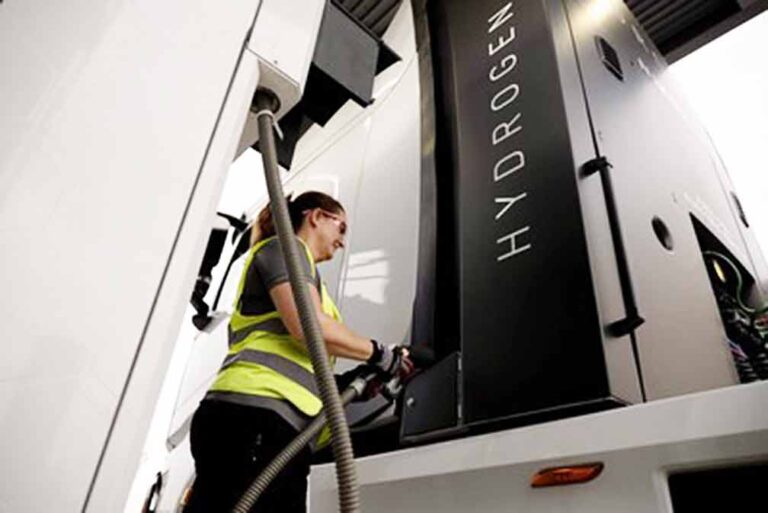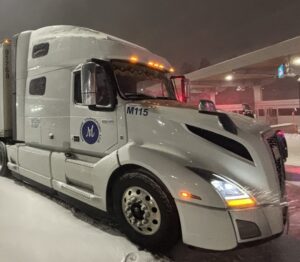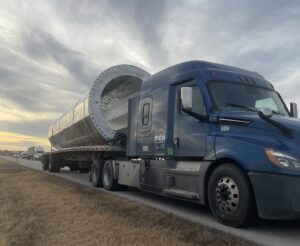WASHINGTON — As fossil fuel emissions continue warming Earth’s atmosphere, the Biden administration is turning to hydrogen as an energy source for vehicles, manufacturing and generating electricity.
It’s offering $8 billion to entice the nation’s industries, engineers and planners to figure out how to produce and deliver clean hydrogen. States and businesses are making final pitches Friday as they compete for a new program that will create regional networks, or “hubs,” of hydrogen producers, consumers and infrastructure. The aim is to accelerate the availability and use of the colorless, odorless gas that already powers some vehicles and trains.
This comes just days after The North American Council for Freight Efficiency (NACFE) and RMI released a new report focusing on hydrogen-powered trucks.
How can enough hydrogen be produced to meet demand — in ways that don’t worsen global warming?
And how can it be moved efficiently to where users can get it? Such questions will be tackled by the hubs.
Nearly every state has joined at least one proposed hub and many are working together, hoping to reap the economic development and jobs they would bring. The governors of Arkansas, Louisiana and Oklahoma came up with the “HALO Hydrogen Hub” to compete for funding, for example.
Big fossil fuel companies like Chevron and EQT Corporation, renewable energy developers such as Obsidian, and researchers in university and government labs are involved, too.
The bipartisan infrastructure law signed by President Joe Biden last year included $8 billion for a program to establish six to 10 regional “hydrogen hubs” around the nation. A hub is meant to be a network of companies that produce clean hydrogen and of the industries that use it — heavy transportation, for example — and infrastructure such as pipelines and refueling stations. States and companies have teamed up to create hub proposals. Their final applications are due Friday at the U.S. Department of Energy, which is expected to start awarding money later this year.
Hydrogen can be made in ways that yield little if any planet-warming greenhouse gases. The Energy Department says hydrogen, once produced, can generate power in a fuel cell, emitting only water vapor and warm air. The department says the hubs will produce “clean” hydrogen, although its definition includes hydrogen produced with natural gas. Gas companies have talked about mixing hydrogen at low concentrations with methane for delivery to homes and businesses.
Some consider hydrogen “clean” only if made through electrolysis — splitting water molecules using renewable energy sources such as wind and solar power, which also is carbon free, as well as nuclear power. But some oil and gas companies say they can use fossil fuels as feedstocks if they capture the carbon dioxide and keep it out of the atmosphere.
Environmental groups say hydrogen presents its own pollution and climate risks. When emitted into the atmosphere, it boosts volumes of methane and other greenhouse gases, underscoring the need to avoid leaks from hydrogen systems – an issue the hubs should consider, said Nichole Saunders, staff attorney with the Environmental Defense Fund.
The Energy Department asked for detailed plans and received 79. In December, the department encouraged 33 of those with hub proposals to submit a final application, although ones that were discouraged can still apply. The department hasn’t identified the applicants because of sensitive negotiations over where to put the hubs.
The environmental nonprofit Clean Air Task Force has monitored the process and identified 23 finalists on an online map. The Associated Press contacted those groups and received responses from most, confirming that they were encouraged by the DOE to apply by Friday and sharing details of their plans. Among them are energy producers — fossil fuels as well as renewable developers — plus states, universities, national laboratories, utilities and companies that plan to use the hydrogen.
More than 60 public and private entities in the Midwest want a hub in their region, for example. The Midwest Alliance for Clean Hydrogen says it would be an “ideal fit,” partly because many large industrial sectors there, including steel, ammonia and refining, rely on “dirty hydrogen consumption” to fuel their operations.
The Appalachian Regional Clean Hydrogen Hub is a partnership involving the state of West Virginia and EQT, the nation’s largest natural gas producer, among others. They say their region has enormous gas resources and could produce hydrogen from methane using heat, steam and pressure while capturing the carbon dioxide it would generate.
At least eight other proposals would generate hydrogen from water through electrolysis, primarily using renewable sources such as wind and solar, although some would power the process with nuclear energy. They are concentrated in coastal and Upper Midwestern states. The Northeast Regional Clean Hydrogen Hub proposal includes seven Northeast states, led by New York, and more than 100 partners who would use hydrogen in transportation and heavy industries, and for long-duration energy storage.
California has a renewables-only plan to use hydrogen to decarbonize transportation, ports and power plants, with its Alliance for Renewable Clean Hydrogen Energy Systems. Washington and Oregon also want to use renewables to produce hydrogen to use for heavy-duty transportation, aviation, maritime and agriculture. The Pacific Northwest Hydrogen Association says it’s planning projects in those two states, plus Montana.
The Great Lakes Clean Hydrogen Coalition would produce hydrogen at the Davis-Besse Nuclear Power Station in Oak Harbor, Ohio, through electrolysis and transport it by pipeline and truck for the region’s steelmaking, aviation and glass manufacturing industries.
Some hubs would use both natural gas with carbon capture techniques and renewables, like the HyVelocity proposal in the Gulf region. That hub includes Chevron, Air Liquide, University of Texas, GTI Energy and the Center for Houston’s Future. They say a hub makes sense there because the Texas Gulf Coast already produces 3.5 million metric tons of hydrogen annually, or one-third of all U.S. hydrogen production.
The United States can’t meet its climate goals relying on a vast buildout of renewables and electrification alone, said Emily Kent, the U.S. director for zero-carbon fuels at the Clean Air Task Force.
But clean hydrogen plays an important role in decarbonizing sectors of the economy that are nearly impossible to electrify, she added. That includes long-haul trucking, marine shipping and aviation, heavy industries including iron and steelmaking, and the existing production and use of hydrogen.
Yet, the United States makes very little hydrogen. Currently it’s produced using natural gas to be used for refining petroleum and producing ammonia for fertilizer.
Joseph Majkut, at the Center for Strategic and International Studies think tank, said the hubs, along with the tax credits offered for hydrogen production, are the way the U.S. is going to commit significant public spending to jumpstart the industry.
The country wants to make the electric grid carbon-free by 2035, and reach net zero economy-wide by 2050 so the greenhouse gases produced are no more than the amount removed from the atmosphere. The U.S. Department of Energy says hydrogen has great potential for providing power and heat.
“We’ve been producing and using hydrogen for a long time,” Kent said. “We have not been producing it in these ways, with these technologies, and we have not been using it in a lot of these sectors.”
The Trucker News Staff contributed to this report.
The Associated Press is an independent global news organization dedicated to factual reporting. Founded in 1846, AP today remains the most trusted source of fast, accurate, unbiased news in all formats and the essential provider of the technology and services vital to the news business. The Trucker Media Group is subscriber of The Associated Press has been granted the license to use this content on TheTrucker.com and The Trucker newspaper in accordance with its Content License Agreement with The Associated Press.















